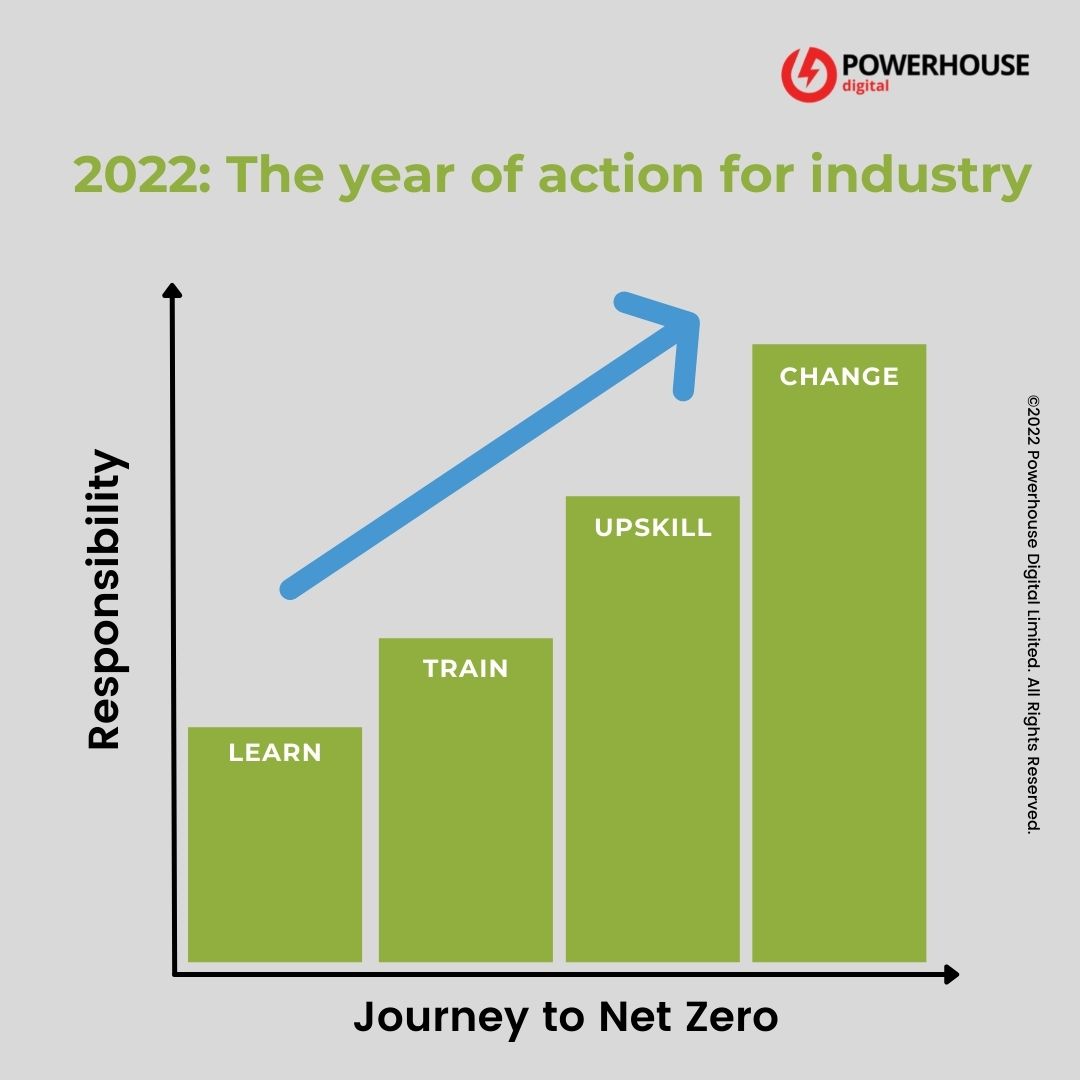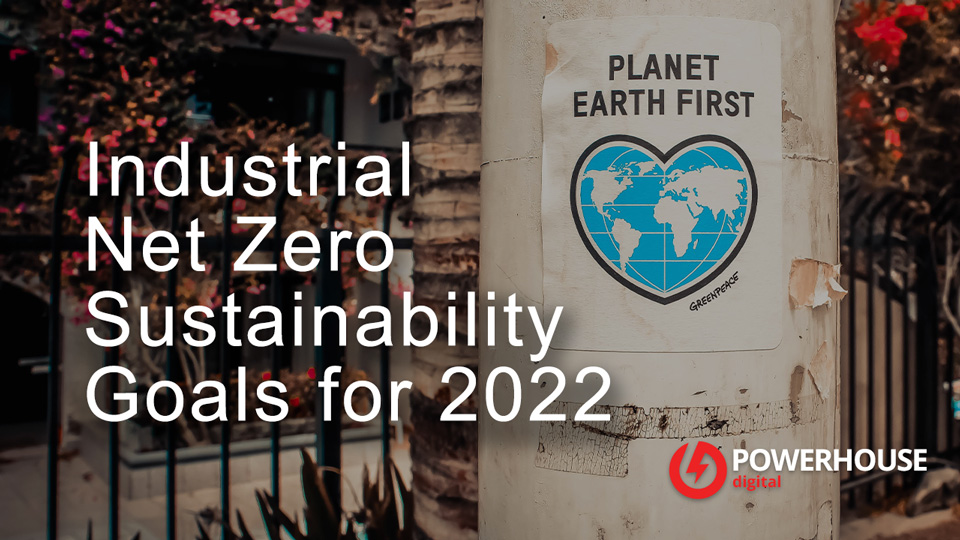How Manufacturing Can Take Action to Achieve Net Zero Targets
The 2015 Paris Agreement set in motion a plan to restrict the global temperature increase to a maximum of 1.5 degrees Celsius above pre-industrial levels. This leaves a small yet significant 0.5 degree ‘buffer’ before the critical 2 degree mark. That’s the point at which experts predict more than one third of the world’s population would face extreme and devastating conditions, including drought and deadly heatwaves.
So far, this 1.5 degree limit is being maintained. However, in order to prevent it rising, the UK – and numerous other nations – have committed to achieving net zero emissions by 2050. To be on track for success, emissions must drop by two thirds by 2035, which means all industries must do their part.
Net zero is very clearly a shared responsibility. However, it is perhaps reasonable to say that manufacturers have a little more weighing on them. “Manufacturing businesses account for around one sixth of UK emissions, and transformation of manufacturing processes is key if we are to meet our emissions targets over the coming decades.” So says Anne-Marie Trevelyan, Minister of State for Business, Energy and Clean Growth, in the Government’s 2021 Industrial Decarbonisation Strategy.
Overall, the strategy makes it clear that manufacturing and industrial emissions must be reduced by 90% by 2050 to meet the UK’s net zero goals. That’s the equivalent of removing every single vehicle from the roads.
Making progress with Net Zero
The good news is that, during the COP26 climate change conference in November 2021, it became obvious that progress was being made. But there’s still much more to be done. As a result of the 13-day event, the Glasgow Climate Pact was created, outlining the 4 essential elements to moving forward:
- Mitigation: Actively reducing carbon emissions from industry
- Adaptation: Supporting those who have been affected by climate change
- Finance: Delivering essential funding to help countries reach their climate goals
- Collaboration: Forming partnerships to innovate and tackle climate change together
While these are Government-level actions, they could be transformed into the foundations of change for all UK manufacturers, engineers, distributors, and more. We can look at them as our sustainability goals for 2022.
2022: The year of action
Most – if not all – manufacturers are already well aware of the 3 R’s: reduce, reuse, recycle. It’s been practised for years. But this year, we all need to do more. Fortunately, many are trying. In fact, it’s reported that more than half of all UK manufacturers and construction companies have developed sustainability agendas. The bad news is that it’s estimated that just 10% have what it takes to deliver.
The solution? Learn. Train. Upskill. Change. Set achievable sustainability goals for your business. And that’s where we can borrow the messages from the COP26 outcome summary to help shape change.

Here’s how to take action, and use the 4 elements of success to drive real results this year.
1. Mitigate
The ‘mitigate’ outcome refers to the act of actively reducing carbon emissions, and this is perhaps the easiest place for manufacturers to start. Even the smallest changes – such as promoting cycle-to-work schemes or car sharing – can have a significant impact. An even bigger impact can be seen by incorporating more technologies into day-to-day operations and embracing digital transformation.
There are a number of ways to embrace digital in manufacturing. One is through utilising online communications technologies to reduce business travel. A McKinsey study found that one building product manufacturer spent $80 million on travel in 2019. Another is to use digital technologies for preventative maintenance monitoring. This can reduce the risk of machines and equipment operating inefficiently and emitting more greenhouse gases than standard.
It’s estimated that 4.5% of manufacturing emissions could be eliminated by embracing digital technologies – while simultaneously driving between a 1.5% and 3% increase in manufacturing growth.
2. Adapt
The ‘adapt’ outcome refers to helping those who have been impacted by climate change. But manufacturers can shift the focus here to create a new goal for 2022 of embracing change within the workplace. This means adapting to the situation and exploring new ways to operate without harming the environment. There are many different types of change that could be rolled out across manufacturing industry.
IoT sensors: Connected devices and Internet of Things sensors can be used to provide more accurate data on energy consumption and carbon footprints, highlighting where there’s room for improvement.
Automation: Automation and artificial intelligence (AI) can be utilised to simultaneously optimise processes and reduce energy consumption. Automated industrial doors for heat conservation are one example.
Heat recovery technologies: Heat is a common byproduct of many manufacturing processes. Unfortunately, it is often wasted by default. Technologies can recover this heat waste for use.
Material substitutions: Selecting alternative, more sustainable raw materials can reduce demand for non-renewable resources, paving the way for a new future of green, low-carbon manufactured products.
3. Finance
The ‘finance’ outcome refers to funding in support of the move forwards to new green initiatives. This is something manufacturers should be prioritising this year. As the Industrial Decarbonisation Strategy notes, “Low-carbon manufacturing will be more expensive for some sectors, leading to an increase in their costs, and therefore risking a reduction in their competitiveness.” However, with strategic planning, preparation, and budgeting, businesses don’t necessarily have to arrive at this worst-case scenario.
The first step should always be to reduce outgoings wherever possible. This may include replacing old, energy-draining equipment – even small items such as light bulbs – with more efficient alternatives. It may also include installing smart meters to track energy usage, or investing in improved insulation to reduce heat loss. The second step should be to explore what ‘green’ grants are available for small to medium-sized enterprises in your region. There’s a good overview of energy efficiency grants here.
4. Collaborate
The ‘collaborate’ outcome refers to working with others. Manufacturers cannot do this alone. And nor should they, especially considering that the manufacturing process contributes remarkably little to the industry’s carbon emissions. In fact, while half of all global emissions derive from eight manufacturing supply chains – food, construction, fashion, fast-moving consumer goods, electronics, vehicles, professional services, and freight – just a ‘small proportion’ is emitted during the direct manufacturing process.
This is worrisome. Especially as many manufacturing businesses struggle to understand their own carbon footprint, never mind second-tier emissions from across their supply chain. Why? Because it’s never discussed. The Carbon Disclosure Project found that only one-third of companies engage with their suppliers about supply chain decarbonisation, and that’s something that needs to change this year. In 2022 – and beyond – collaborative working will be essential for driving real change in CO2 emissions.
Offsetting emissions
It’s important to recognise that, even if manufacturers meet these sustainability goals for 2022, in energy-intensive industries such as manufacturing it’s impossible – at least right now – to emit no greenhouse gases whatsoever. That’s exactly why the UK’s goal is to achieve ‘net zero’, rather than simply zero.
There’s a big difference. And recent research shows that one in five businesses don’t understand the meaning of ‘net zero’. Net zero doesn’t mean cutting emissions entirely. It means creating a balance between the amount of carbon released, and the amount of carbon removed from the atmosphere.
So in addition to reducing emissions, manufacturers should also be considering how to offset the emissions that they do make. This can be achieved through methods such as purchasing carbon credits; an initiative that enables businesses to pay for trees to be planted to offset the emissions they produce. According to one UK-based carbon sequestration company, a single broadleaf can absorb 0.17 tonnes of carbon over its lifetime, and a conifer can absorb 0.11 tonnes. Overall, a hectare of young trees can absorb more than 400 tonnes, helping to remove a huge amount of existing carbon from the air.
Why now?
You may be asking, “Why 2022? Why now?” And the answer is simple. Low-carbon manufacturing is the future. The Government has already confirmed that it is gearing up to support low-carbon manufacturers in a multitude of ways, from driving demand for sustainably-made products to developing a new low-carbon industrial market. With the pressure now on to achieve Net Zero in less than 30 years, the Government looks set to do what it can to transform energy-intensive industries like manufacturing.
For you, that means adapting now to ensure your business will continue to be relevant tomorrow.
DNV’s Energy Transition Outlook 2021
DNV’s Energy Transition Outlook tells the story of a remarkable transformation of our energy mix and how electrification is revolutionizing how we produce transmit and consume energy. In it’s fifth edition the continued guiding principle of the Energy Transition Outlook is to create a most likely forecast of our energy future to 2050. In spite of a doubling of electrification the report unveils that even if all electricity was green from this day forward the world would still fall a long way short of achieving net zero emissions by 2050.
The opportunity to build back better has been lost. Of the trillions of dollars spent on economic stimulus packages, the majority have been focused on protecting rather than transforming existing industries and not decarbonizing hard to abate sectors like shipping aviation, trucking and construction.
Vital technologies like hydrogen biofuels and carbon capture and storage remain under-resourced. Hydrogen enters the picture at scale only in the late 2030s and that is far too late. All this leads us further away from the Paris Agreement.
Global energy emissions dropped six percent in 2020 due to Covid-19, but we will still fall way short of the net zero target by 2050. This considered, DNV forecasts a temperature increase of 2.3 degrees by the end of the century.
The verdict is clear the world needs to dramatically accelerate the time scale of the energy transition.
Explore how the energy transition is unfolding on a global and regional scale at eto.dnv.com
Gen8-IoT™ from Powerhouse Digital, is a groundbreaking industrial door management software solution. It increases the productivity of your operation, improving accuracy and cutting costs.
It offers: Advance analytics, alert and notification tools to help prevent costly damages to people and assets.
More importantly, it helps your organisation reduce it’s carbon footprint and works towards meeting your Net Zero targets.

